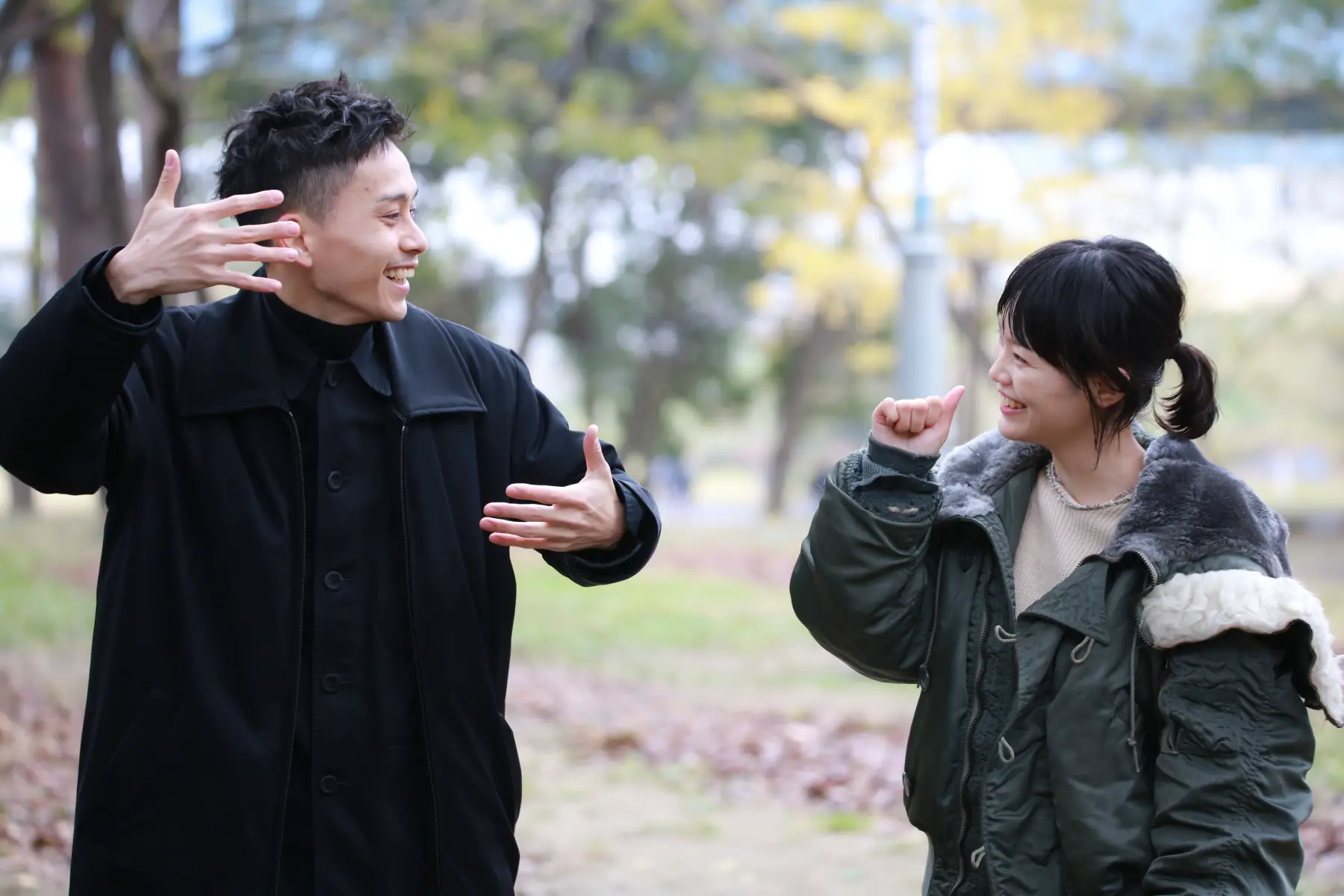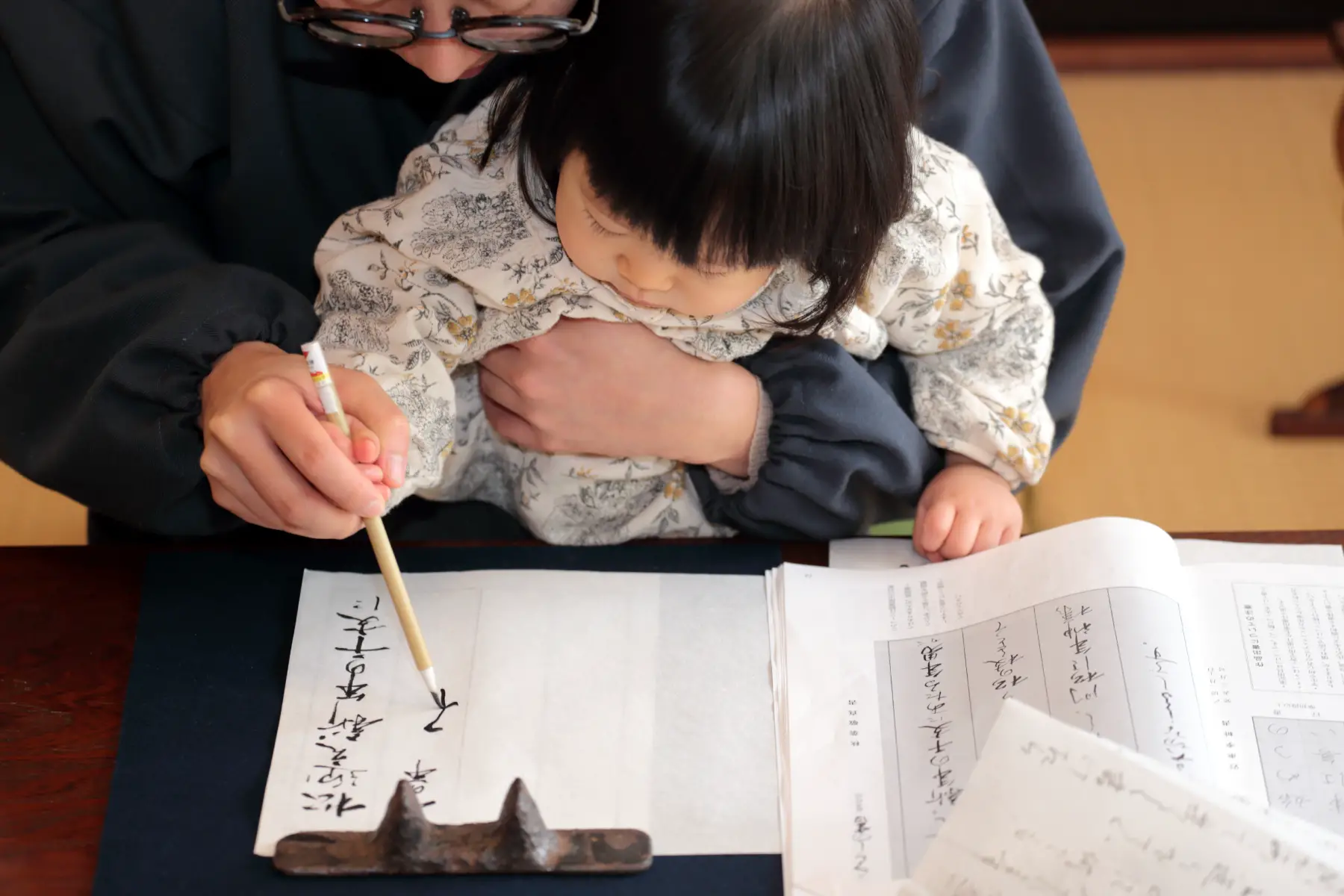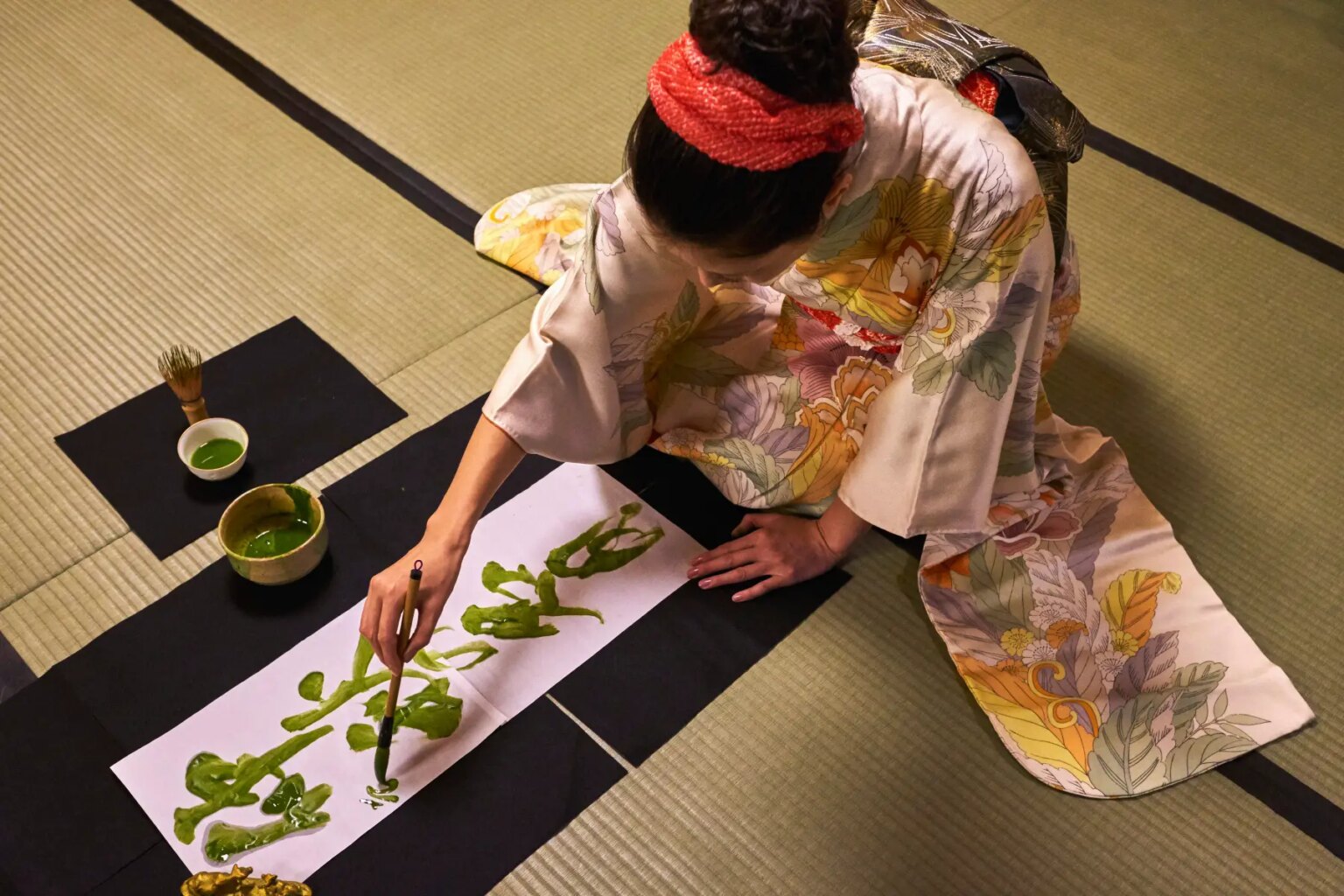As an international, adjusting to a new culture and language can be challenging. Therefore, learning Japanese will be useful when negotiating your new life abroad.
From its history to its regional dialects, here’s what you need to know:
- What languages are spoken in Japan?
- Where the Japanese language is spoken worldwide
- Origins and history of the Japanese language
- Japanese dialects
- Sign language in Japan
- Japanese pronunciation/phonology
- Japanese grammar
- Interesting facts about the Japanese language
- Learning Japanese in Japan
- Useful resources
What languages are spoken in Japan?
Japanese is the national language of Japan, spoken by 125.4 million people (2022) as their native tongue. As such, everything from the government and media to the education system and everyday conversation happens in Japanese.

The country also has a range of regional dialects you may hear in local areas; however, these are less widely used.
When it comes to English, Japan has a low proficiency and is ranked 80th out of 111 countries on the 2022 EF English Proficiency Index (PDF). As a result, most English speakers in the country are found in major cities and areas which tourists frequent.
Where the Japanese language is spoken worldwide
Japan is the only country globally where Japanese is the national language. However, due to widespread emigration to other parts of the world, there are many native Japanese speakers in places like the Netherlands, the United States (US), Brazil, Guam, mainland China, and Canada, among others.
The language is exceedingly popular, so much so that it is the thirteenth most spoken language in the world, behind English, Mandarin, Hindi, and Spanish.
Origins and history of the Japanese language
Interestingly, the origins of the Japanese language are complex. As such, there are different schools of thought about how it came to be.
Some believe that the language has ties to the language families in the Asian region, including the Austroasiatic, Tibeto-Burman, and Sino-Tibetan dialects. However, the prevailing theory is that the Japanese language has roots in Korean.

Experts have also found that Japanese is part of the Japonic languages, including Hachijō, Amami, Okinawan, Miyako, Yaeyama, and Yonaguni.
The first written records of the Japanese language come from the 8th century, but most experts agree that Old Japanese fell out of favor between the 12th and 16th centuries. After this, the language evolved into what we now know as Modern Japanese.
Japanese dialects
Despite Japanese being the official language, numerous, though rarer, local dialects are spoken around the country. By some approximates, there are as many as 47 individual dialects in Japan, though there is little consensus for this.
Generally, the languages are split into Western Japanese dialects – such as those in Kyoto and Osaka – and Eastern Japanese dialects, like that of Tokyo.
Many of these are regional languages, so only people in certain cities or prefectures will use them. For example, you may hear the Hakata dialect around the city of Fukuoka and the Kansai-ben dialect in Osaka and the surrounding Kansai region. In addition, other popular dialects include:
- Amami (Ryukyuan language from the Amami Islands) – around 37,000 speakers
- Kikai (Kikai Island, Kagoshima Prefecture) – around 13,000 speakers
- Miyako (Miyako Islands, near Okinawa) – less than 2,000 speakers
Some of the most popular dialects on the smaller islands also include Tohoku, Nagoya, Hiroshima, and Okinawa.
Sign language in Japan
Japanese Sign Language is the main non-verbal language in Japan, with several variations that are distinguishable by dialect and style.
The Japanese Federation of the Deaf (JFD – 全日本ろうあ連盟, Zen-Nihon Roa Renmei) is the national body protecting the rights of Deaf people and those with hearing impairments and promoting JSL resources.
Unfortunately, JSL is not a part of the public education curriculum. Instead, only schools specifically for students with hearing impairments (PDF) and some international schools teach it.
JSL draws heavily from verbal Japanese but differs significantly from the standard spoken language. In addition, it incorporates mouthing, finger-spelling, and finger-writing.
Japanese pronunciation/phonology
The Japanese language uses three writing systems (or alphabets):
- Hiragana (ひらがな)
- Katakana (カタカナ)
- Kanji (漢字)
Hiragana and Katakana both use 46 characters to represent 46 different sounds. This type of language is called a syllabary. In this way, when pronouncing Japanese words, you combine sounds rather than verbalize letters.
Alongside pronouncing the anglicized vowels of a (“ah”), e (“eh”), i (“ee”), o (“oh”), and u (“oo”), you will also need to learn the pronunciation for numerous characters in Hiragana. These are combinations of vowels and consonants. Many of these can be roughly anglicized and pronounced phonetically, such as “ri,” “to,” and “ni.”
Katakana uses the same 46 characters as Hiragana – with similar pronunciations – but you would write these characters differently. The Japanese language is generally written with Hiragana characters, while Katakana characters are used for transliteration of words from other languages.

In addition, there are two subsidiary character systems, Dakuten (濁点) and Handakuten (半濁点). These modifiers can be combined with characters from Hiragana and Katakana to create new character combinations and sounds.
For example, you can combine the Dakuten character for “gi” (ぎ) with the Hiragana character for “yo” (よ) to create a new two-character combination for the sound “gyo” (ぎょ).
Kanji shares parallels with Mandarin in that each character or symbol represents an entire word or idea by itself. In fact, many kanji symbols originate from Chinese characters.
There are over 6,000 kanji symbols, and the pronunciation for each differs. This is because some kanji characters have Chinese-origin meanings, while others have Japanese-origin meanings. For example, the kanji character for father (父) would be pronounced “fu” for onyomi but “chichi” for kunyomi.
To learn more about Japanese pronunciation, visit the NHK World-Japan website.
Japanese grammar
Like all languages, Japanese has many rules for grammar and syntax, some of which can be quite unconventional for international learners. As such, here are a few points to note about the grammar of the Japanese language.
Gender
There are no genders for words in Japanese, unlike Romance languages such as French, Italian, and Spanish.
Men and women sometimes use words differently in practice; however, this is not a strict rule. These gendered speech patterns are known called onna kotoba (女言葉) for women and danseigo (男性語) for men.
The main difference is that onna kotoba is more polite and soft-sounding, whereas dansiego sounds more rough and abrupt.

For example, to say the word “cool,” a woman might say “sugoi ne” (すごいね),” but a man might use the shorter “suge” (すげえ).
There are also no gender differences in polite Japanese speech.
Sentence structure
In the Japanese language, the sentence structure is subject-object-verb. For example, instead of saying “I play sports,” as in English, you would use the Japanese equivalent of “I sports play” (私はスポーツをします).
Japanese syntax is quite flexible, and you can throw in a location, time, or preposition anywhere. Just make sure to put the verb at the end. For example: “My cat is sitting outside in the garden” translates to 私の猫は外の庭に座っています, with the verb falling last in the sentence.
Conjugations
Unlike the Romance languages, Japanese does not use verb conjugations. For example, when you are saying “I do,” “he does,” or “they do,” the verb form stays the same: suru (する).
There are two forms of Japanese: formal and informal. While formal Japanese is used to show politeness to people you do not know well, informal Japanese is used casually with family and friends.
Verbs take on different suffixes to use informal and formal Japanese. Here is an idea of how to conjugate these forms:
| Japanese form | Suffix | Examples | English |
| Informal | -u / -ru | O-mise wa gozen ku-ji ni hiraku (おみせ は ごぜん 9 じ に ひらく) | The store opens at 09:00. |
| Formal | i-dan (い段)or e-dan (え段) syllable, followed by -imasu/-emasu | O-mise wa gozen ku-ji ni hirakimasu (おみせ は ごぜん 9 じ に ひらきます) | The store opens at 09:00. |
In most cases, you can add “-masu” (ます) to the end of any verb to make your sentence or question sound polite.
If you’re asking a question in Japanese, add “ka” (か) to the end of your sentence to turn it into a question. For example:
| Question in Japanese | Translation into English |
| Nan desu ka? (なん です か。) | What is it? |
| Namae wa nandesu ka? (なまえ は なんです か。) | What is your name? |
Grammatical tenses
There are only two tenses in Japanese: the past and the present. The past tense is fairly straightforward to conjugate, as most verbs end with the suffix “-ta” (た) in the informal form. However, this can change to “-tta” (った) or “-da” (だ) depending on the verb. Here are some examples:
| Past tense (informal) | English translation |
| Watashi wa tenisu o shimashita (わたし は テニス を しました) | I played tennis |
| Chichioya ga mukashi takarakuji ni atatta (ちちおや が むかし たからくじ に あたった) | My father won the lottery a long time ago |
| Kino tomodachi to oyoida (きのう ともだち と およいだ) | I swam with a friend yesterday |
When it comes to formal Japanese, most verbs in the past end with ました (-mashita), such as the following:
| Past tense (formal) | English translation |
| Kino tomodachi to oyogimashita (きのう ともだち と およぎました) | I swam with my friend yesterday |
| Kare wa eiga o mimashita (かれ は えいが を みました) | He watched a movie |
Of course, there are exceptions to these rules, which you can pick up through routine practice.
If you want to talk about an action in the future, add a time reference for context. For example:
| Future event | English translation |
| Watashi wa ashita tenisu o shimasu ( わたし は あした テニス を します) | I am playing tennis tomorrow |
| Riku wa raigetsu kara gakko ga hajimarimasu (リク は らいげつ から がっこう が はじまります) | Riku will start school next month |
Interesting facts about the Japanese language
Japanese is full of little quirks and oddities. Here are a few interesting things to note about the language:
- Unlike most Asian languages, it is not a tonal language
- Spoken Japanese is one of the fastest-paced languages in the world
- It has a Romanized script called Romaji (ローマ字)
- There are over 20 ways to say ‘I’ in Japanese
- There are three levels of formality:
- polite language
- honorific language
- humble language
- Modern Japanese originated from the Tokyo dialect
- There are no Japanese names for months – it uses the kanji symbol for “moon” (月) with the number of the corresponding month (e.g., August – 8月)
Learning Japanese in Japan
Learning Japanese is one of the best ways to integrate into local culture. You will likely need it at some point if you plan on studying in Japan, and it can undoubtedly help you if you are searching for a job.
Understanding the language is also practical for ordering Japanese food, navigating public transport, and handling tasks such as sorting out utilities or opening a bank account. Of course, it will also help you make new friends when chatting with locals.

There are plenty of ways to kickstart your language-learning journey. For a classroom experience, you can enroll in a formal language school course or participate in language exchange programs. Government-affiliated groups, such as the Japan Foundation, also provide classes to students of all levels.
Alternatively, you could take online courses like those from Berlitz and FluentU. Downloading a language-learning app like Duolingo or Drops will also help you get a basic grasp of Japanese from the comfort of your phone.
Useful resources
- Brittanica – more information on the Japanese language
- Oxford Research Encyclopedias – a deeper look into the origins of Japanese





